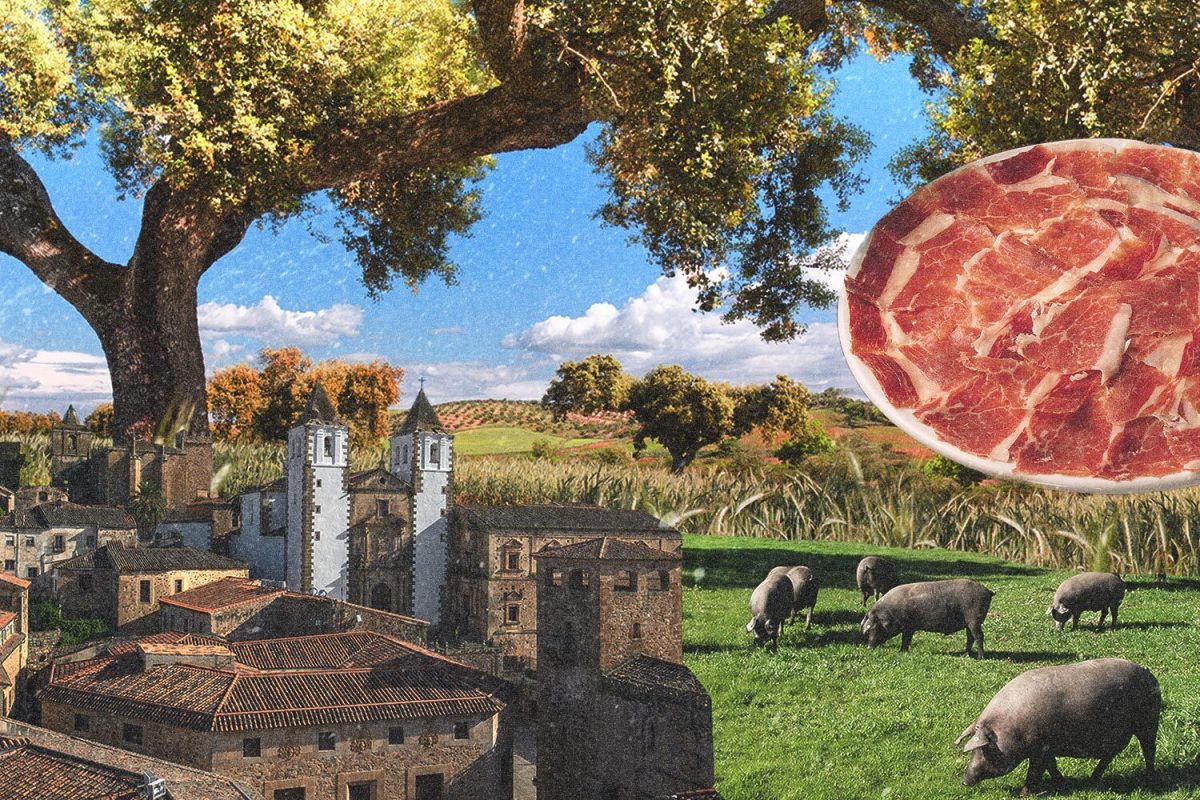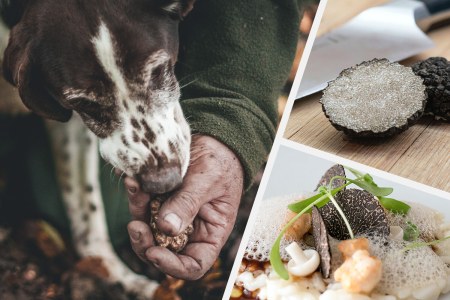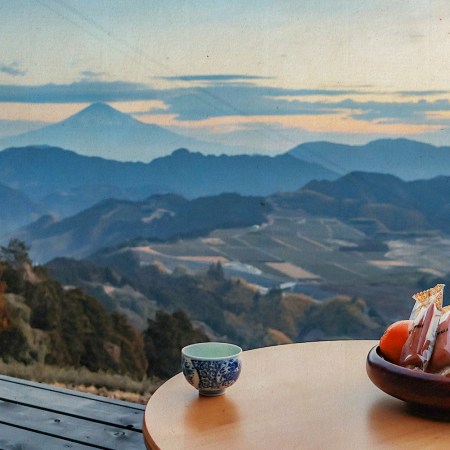Hog heaven exists, and it’s in Extremadura, a region in a remote corner of western Spain. If you’ve never heard of Extremadura, you’re not alone. But this home of what connoisseurs call the best cured ham in the world (sorry Parma) is a food-lover’s delight and more. There’s a timeless quality to this uncrowded region of tree-dotted pastures; protected areas for hiking, cycling and birdwatching; Roman ruins; peaceful walled cities and hilltop medieval castles.
And of course, there’s the Jamón Ibérico de Bellota — Iberian acorn-fed ham. The exquisite and expensive cured ham comes from purebred pigs that munch acorns as they roam the treed expanses of piggy paradise.
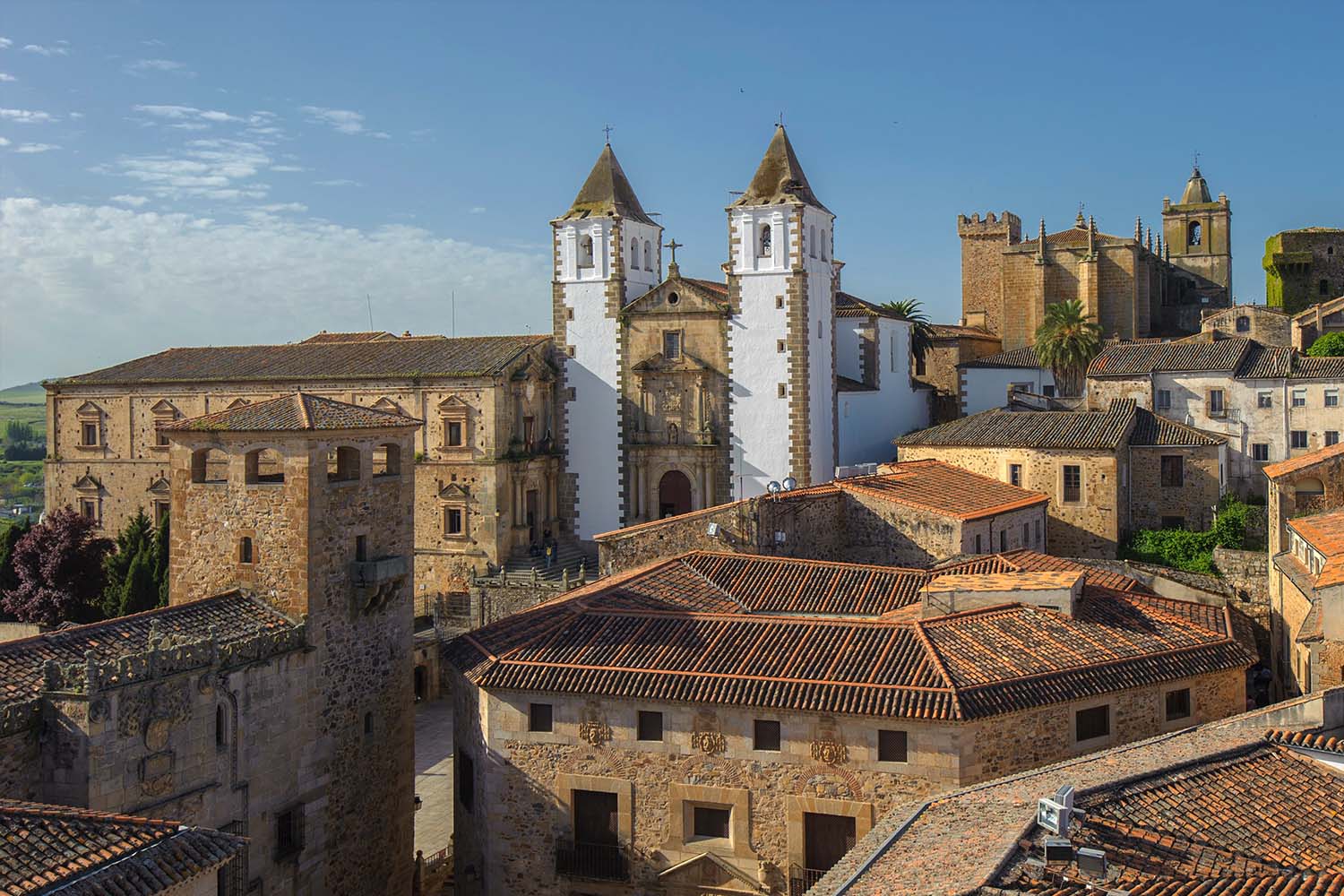
Why Visit Extremadura?
With an area a bit larger than Switzerland, this uncrowded region near the Portugal border has a population of about one million people. It’s a wonderland of locally raised and produced things to eat and drink: top-notch olive oil, buttery olives, honey, wine (including sparkling Cava, which pairs beautifully with the ham), smoked paprika, plump cherries and robust, creamy cheeses. Could Extremadura be Spain’s Provence?
Start in Cáceres, about a three-hour drive from Madrid. The UNESCO World Heritage city boasts the best-preserved historic district in Spain, with towers, ramparts, narrow undulating cobblestone streets, arches and fine Renaissance palaces. It feels like a film set, and it’s not surprising that episodes of series Game of Thrones were filmed here.
The Michelin Guide gushes over restaurant Atrio, giving three stars to Cáceres-born chef Toño Pérez’s “temple of Spanish gastronomy.” I ate at Atrio’s less-expensive, but still-lavish, sister restaurant, Torre de Sande, located across the cobblestone courtyard in a 15th-century mansion. The first course? Jamón Ibérico, of course.
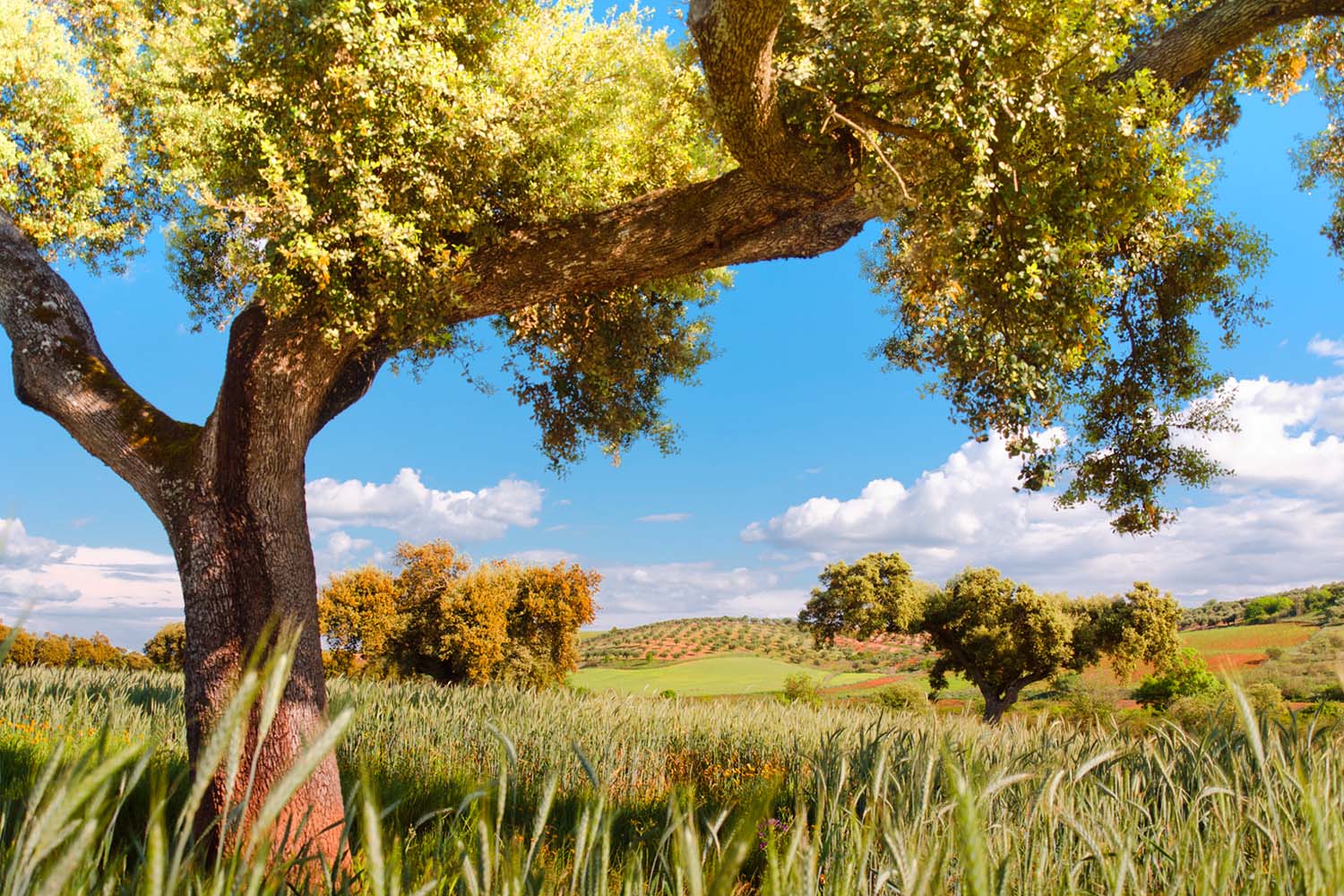
Pork of the Gods
Jamón Ibérico de Bellota comes from purebred, semi-wild pigs that spend the last few months of their life free-range gazing in the 2.5 million acres of managed pastureland called the dehesa. The land is covered with acorn-producing oak trees, and the swine spend their days gorging on the nuts, along with grasses and wild herbs, more than doubling their weight.
The acorn diet yields ambrosial ham marbled with melting fat. It has sweet, nutty flavors and a full, rich umami taste from the naturally occurring mold that grows during up to 36 months of aging. Sea salt and time are all that go into the making of the hams. The best part? It’s good for you. Thanks to the pig’s diet and the simple curing process, the fat is loaded with oleic acid, the same stuff that makes olive oil so heart-healthy. There’s B vitamins, antioxidants, minerals and of course, protein.
Like Beluga caviar, Wagyu beef and Alba white truffles, the top-of-the-line bellota, black-label Extremadura ham is a pricey indulgence. It’s about $1,500 for a 15-pound leg in the U.S. The ham ranges from rosy-red to deep carmine in color. It’s dried but not chewy, pleasingly salty, lushly rich and slightly sweet. The thin ribbons of translucent fat in and around each slice melt on the tongue.
Every part of the pig is consumed, too. I avoided anything related to offal and tucked into sweet tenderloin and juicy pork sirloin, grilled rare over a wood fire at a family restaurant beside a 13th-century monastery. And the sausages! Garlicy chorizo, cured whole pork tenderloins and creamy morcilla patatera made with ground pork and mashed potatoes. Even cloistered nuns get in on the action, selling sweet, lemony perrunillas cookies they make with pork fat.
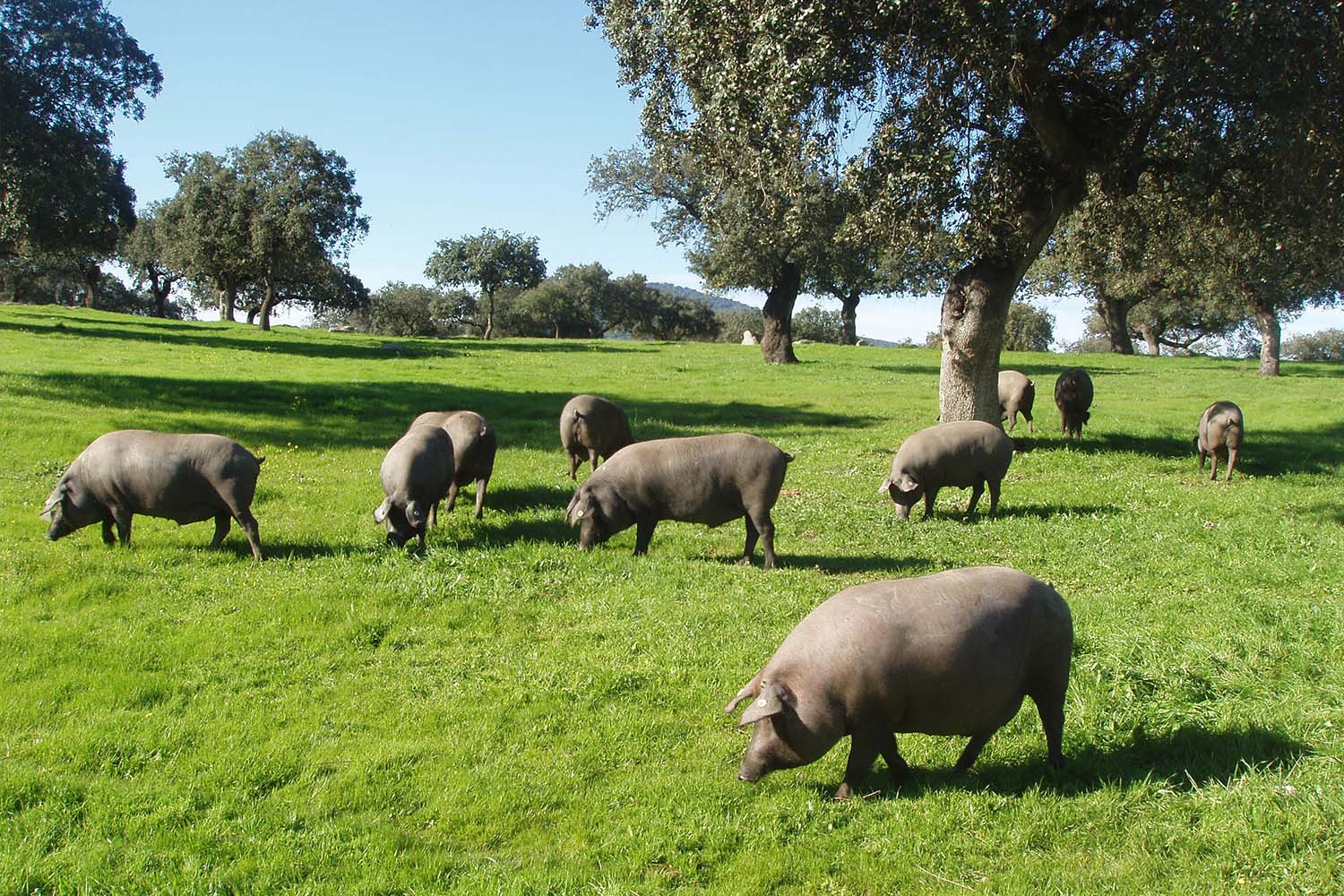
Getting Piggy With It
So what makes these pigs so special? And why do people respond with almost giddy pleasure when asked if they like Jamón Ibérico?
Tradition is everything when it comes to the acorn-fed Iberian pig. It goes beyond what’s on the plate and is tied to culture, history, identity and community. It begins with the land. The dehesa, which continues into southern Spain and Portugal, may technically be a pastureland, but it’s very different from American Great Plains grasslands or range lands. With treed-dotted, rolling hills, low stone walls and wandering animals gazing where they like, the dehesa looks a bit like J. R. R. Tolkien’s fictional Middle-earth Shire. There are planted cork oaks (the trees whose bark makes wine bottle stoppers) and rounded-top evergreen oaks. Goats, sheep, beef and the famously powerful Spanish fighting bulls also graze on these lands.
“This is a landscape that really has not changed in 700 years,” says birding expert Martin Kelsey.
To get to the heart of the pig story, our small group followed part of the self-guided Ruta del Iberico, which loops around Extremadura and focuses on the Iberian pig. Road signs are easy to follow and the route includes suggested stops to eat and where to stay in walled towns with Roman and Moorish ruins, castles and cloisters.
In Zafra, bed down in the former palace in of the Duke of Feria, now one of the state-owned luxury Parador hotels.
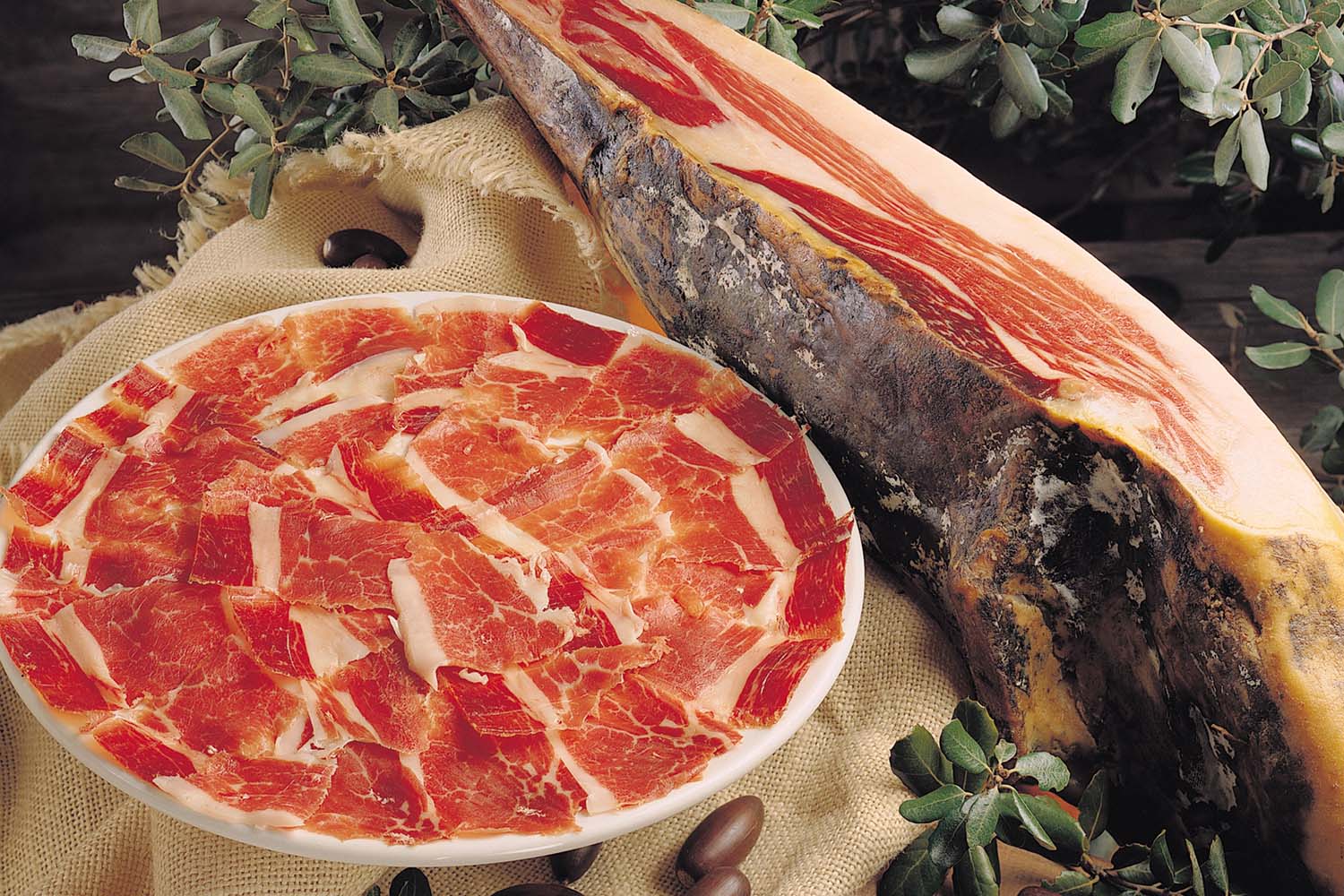
How to Eat It
Jamón is typically a first course or a tapas-like nibble with drinks. Tradition dictates the meat be hand-sliced into thin, domino-sized pieces. It’s usually presented in a tight spiral on the plate. Pick up a piece, fold it in half and pop it into your mouth. No bread, no crackers. This ham gets star billing.
“If I tell you the truth, I love it,” says Marta Sanchez Grande, a 28-year-old primary school teacher who lives in Cáceres. She eats it with a glass of white wine or vermouth when she goes out for drinks and there’s always a leg of jamón at home for Christmas or a birthday party. “For me it’s so tasty, but tradition has to be part of it,” she says.
Truffle Hunting in the Truffle Capital of the World
In Italy’s Piedmont region, truffles are the name of the game.Pig Pride
Extremadura is pig proud. Roundabouts at the entrance to towns typically feature a monument depicting a ham leg mounted in a carver. Shops sell acorn-flavored caramels “for my favorite piggy.”
A good place to learn about all things Iberian pig is in Monesterio in southern Extremadura. A contemporary building houses the Museo Jamón, a small museum dedicated to pigs, ham and tradition. There’s an oinking pig statue at the first display, which explains the importance of the dehesa. A short film follows the traditional, daylong process that starts with the matanza, or “sacrifice of the pig,” showing how it’s butchered and hand cut into parts as jovial friends and family pitch in to make a variety of sausages. Everything is shared among the helpers. (Vegetarians will want to avert their eyes.)
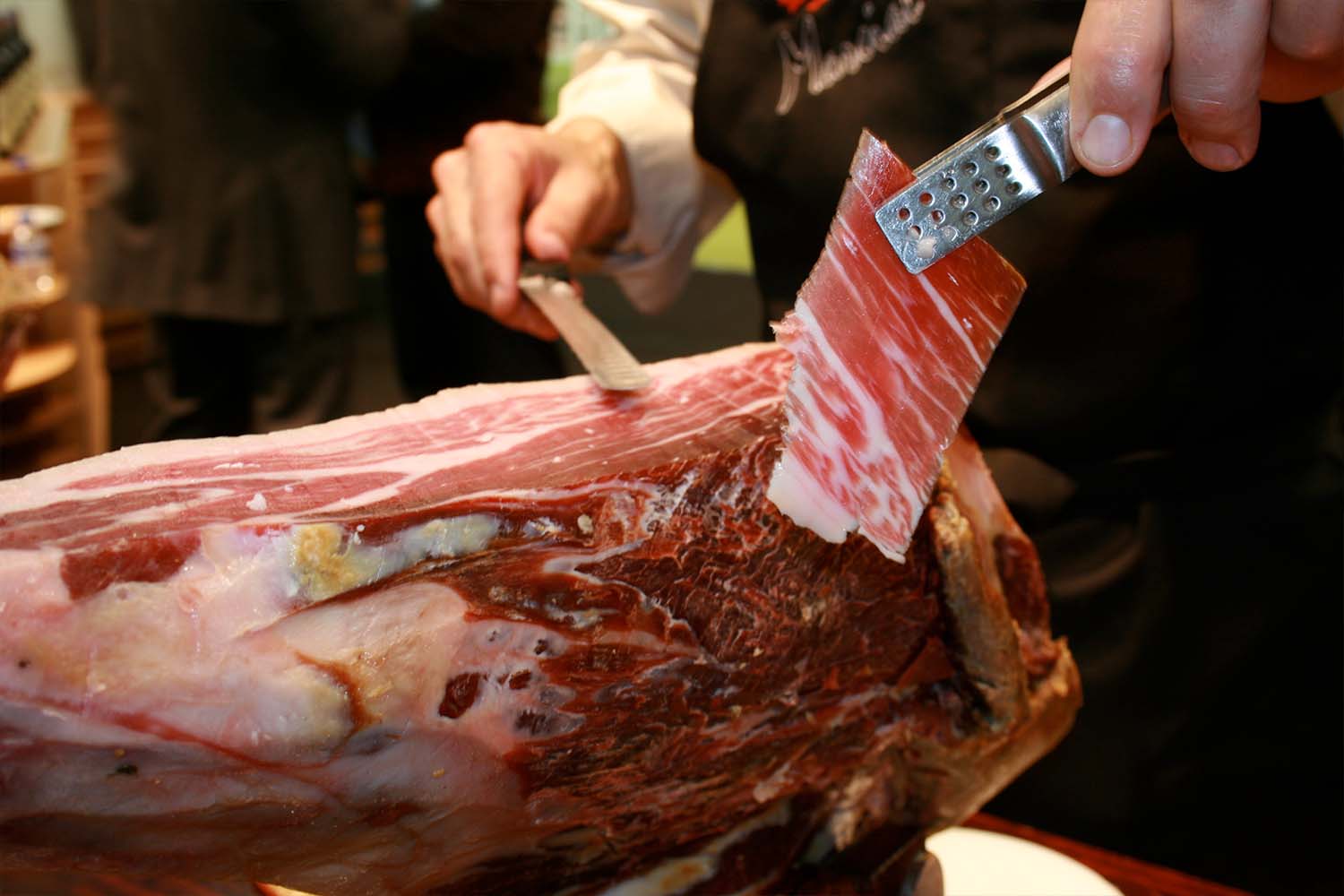
Up Close With the Pigs
I wanted to see some of these superstar pigs on the hoof. Pepe Alba, a maestro cortador (master jamón carver) for more than 20 years, leads day trips to the dehesa with his company Turismo del Jamon. He also teaches group classes in a how to properly (and safely) slice the meat from a leg of ham for about $70. Most of his classes are made up of visiting Americans and Puerto Ricans.
Alba drove us down a rough rural road outside Badajoz to meet his friend Manuel Albarran, who raises 100 purebred Iberian pigs on land his family has farmed for more than a century. The ground is covered with acorns. They taste tannic and frankly, nasty. But who am I to argue with a 400-pound pig?
We stood on the other side of a stone wall as two dozen hefty animals meandered past on delicate trademark black hooves. They made contented snorts as they devoured the fallen acorns with robust grinding and crunching sounds. They headed for a shallow pond, long ears flopping. (Fun fact: happy pigs blow bubbles.)
Alba, who was teaching a group of visiting Philadelphia physicians the basics of jamón carving at an event that evening, put out a picnic of Extremadura cheese, cured meats and Cava beside a picturesque reservoir. A leg of the famous ham was clamped in a jamonero holder. He picked up a lethal-looking long, thin knife. “Always place the knife first, then your hand,” he said as he firmly slid the blade towards him to make perfect, flat cuts. We took turns learning to wield the knife and ate the slices of noble jamón Ibérico, surrounded by oak trees, raising our glasses to toast the mighty pigs of the Extremadura dehesa.
Sidebar: Know Your Ham
Black tag: Jamón Ibérico de Bellota: The primo, 100% purebred, acorn-fed Iberian pig with the highest fat content. The pigs eat commercial feed until they reach 200 pounds, then go into the dehesa for several months. They range as they like and eat only acorns, grasses and herbs. Like prizefighters, they aren’t ready until they make weight, more than doubling their mass. The meat has the longest curing phase, up to three years.
Red tag: Ibérico de Bellota: These are jamón (back leg) or paleta (front leg and shoulder) from free-range pigs that are a mixed breed of Ibérico and Duroc. They also feed on acorns.
Green tag: Ibérico de Cebo de Campo: Jamón or paleta from free-range pigs that are half Iberian, half Duroc. They eat grass and commercial feed, but few acorns.
White tag: From half Ibérico, half Duroc pigs that are pen raised on grain.
This article appeared in an InsideHook newsletter. Sign up for free to get more on travel, wellness, style, drinking, and culture.
